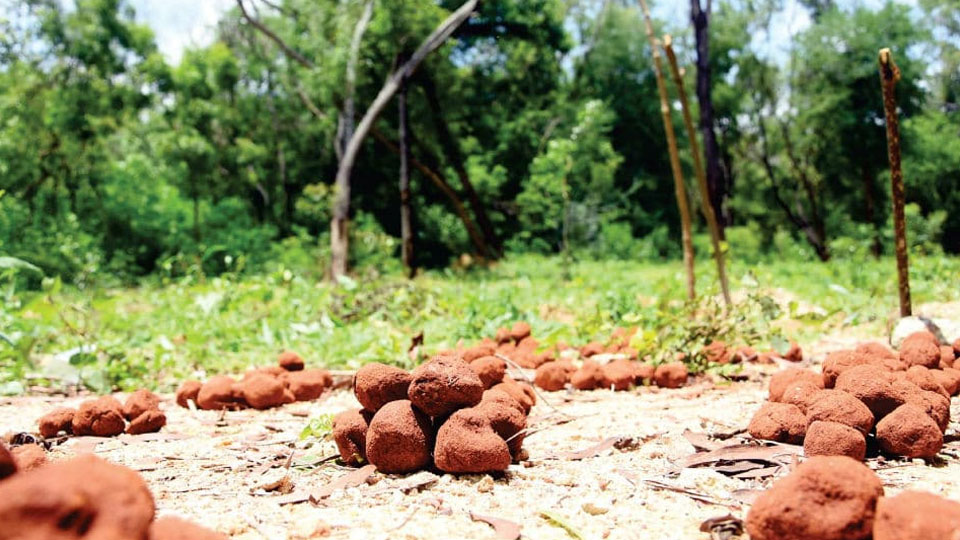Mysuru: Karnataka Navodaya Schools and Navodaya Old Students Association, in association with the Forest Department, is launching one crore seed balls project tomorrow (June 10), said Mandya Navodaya old student H.N. Bharath Kumar, Convenor of the Seed Ball Project 2018.
He was addressing a press conference at Pathrakartara Bhavan here yesterday and said that this programme of producing one crore seed balls will be launched simultaneously in all the 28 Navodaya Schools across the State.
In Mysuru, it will be launched at DMG Halli Navodaya School at 7.30 am. In every Navodaya School there are more than 400 students, apart from 1,500 old students. They will join hands with the teachers of the schools to produce seed balls, he said.
After this one day programme, the seed ball will be dried for one or two days and on the direction of the Forest Department, seed balls will be dispersed or planted in schools and college premises and also planted on the roadside, he said.
Seed ball making: This is a very low cost project and is beneficial to everyone. Mud and cow dung are mixed and a seed is placed inside. Later, it will be rolled into a ball and dried and then dispersed in open spaces. Otherwise, a two inch pit will be dug and the seed sown, explained Bharath Kumar and added that the seed ball production project will also be launched in Navodaya Schools in the States of Andhra Pradesh, Telengana and Kerala at the same time on June 24.
Assistant Conservator of Forests (ACF) Shashi said that the seed balls are prepared by placing the seeds of fruit-bearing plants inside mud and cow dung mix. The Forest Department has identified forest land around Chamundi Hill to sow the seeds apart from sowing it in schools and colleges. Once the plant grows it will attract birds and animals, he added.
Hiroshima, Nagasaki benefiting
The seed ball production is an age old practice. However, in the recent times when Hiroshima and Nagasaki, the two cities in Japan, were reduced to rubble by atom bombs, the seed balls were dispersed from helicopters. This experiment yielded good results and slowly the devastated cities started turning green.
—H.N. Bharath Kumar








Recent Comments